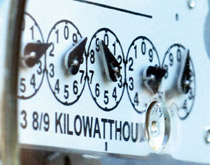
On August 2, 1990, Saddam Hussein’s troops march into neighboring Kuwait. International condemnation and economic sanctions quickly follow. Tensions escalate. On January 17, 1991, coalition forces begin aerial bombardment of the Iraqi force. Days later, reports surface of an unexpected disaster. In an effort to thwart U.S. Marines from coming ashore, the Iraqis have opened valves at a key oil terminal, intentionally creating what becomes one of the largest spills in history. Millions of barrels are dumped into the Persian Gulf. The slick is 5 inches thick and covers an area the size of the island of Hawaii.
On another hot August afternoon in 2003, air conditioners are working overtime. One high-voltage transmission line in northeastern Ohio begins to sag with the overload. It brushes a nearby unpruned tree and shuts down. The utility’s alarm fails to sound. Within 90 minutes, three additional lines sag into trees and switch off, forcing other lines to carry their power. Those overtaxed lines soon fail, resulting in cascading blackouts through southeastern Canada and eight northeastern U.S. states. Approximately 50 million people lose power for two days.
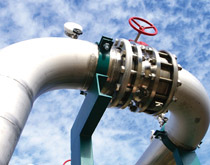
On March 11, 2011, a magnitude 9.0 earthquake strikes off the coast of Japan, followed by a powerful tsunami that travels 6 miles inland. Three nuclear reactors at the Fukushima plant lose power and, consequently, cooling. As workers scramble to cool the reactors, a hydrogen explosion occurs. Officials attempt to cool them with seawater, and more explosions ensue. Fire breaks out. Radiation is released into the air, ground, and water. The government calls for voluntary evacuation within 20 miles.
Incidents like these dramatically spotlight our vulnerability when it comes to energy—limited resources, accidents, intentional terrorism. Less sensational, but equally critical, are other issues. Energy production, transmission, and consumption continue to impact our environment. U.S. foreign policy is constrained by dependence on foreign oil—costly dependence. Rising gasoline prices eat away at family budgets. Reliance on energy-hungry technology is steadily increasing. And today’s grid, our interconnected system of electricity generation and distribution, is so antiquated that Thomas Edison would recognize many components. Is it any wonder that energy remains a priority on the world’s agenda?
These are the concerns on the minds of the men and women gathered in Pittsburgh and Silicon Valley in March 2011—the same memorable month of the Fukushima meltdown. The 66 professionals are leaders from industry, government, and academia. They include CEOs of major corporations, distinguished professors, and innovative entrepreneurs. They’ve come together to discuss how Carnegie Mellon University can lead the way to a sustainable energy future.
The presentation turns to the groundbreaking research currently under way in all corners and colleges of the university: Chemical engineers who are developing fuel cells for tomorrow’s automobiles. Materials scientists who are creating innovative substances to capture carbon dioxide from power plant exhaust streams. Architects who are designing energy-efficient office buildings and control systems. Engineering and public policy researchers who are developing analytic tools to help policymakers.
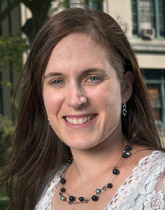
Long fascinated by electricity and power systems, Gabriela Hug-Glanzmann earned a PhD in electrical engineering in her native Switzerland. Soon after, in 2008, she accepted a position as asset management engineer at Canada’s Hydro One, whose electricity transmission system accounts for about 96% of Ontario’s transmission capacity. Just a few months into the job, she received a call from Marija Ilic, who is director of Carnegie Mellon’s Electric Energy Systems Group (EESG), which is comprised of faculty and graduate students from several colleges at Carnegie Mellon and from universities around the world. The group is working on solutions for the world’s future multi-billion-dollar electric energy consumption. Would Hug-Glanzmann be interested in joining them? She says she wasn’t looking for a faculty position, but it was a “great opportunity.” By 2009, she and her husband were relocating again, this time to Pittsburgh.
Today, Hug-Glanzmann is co-director of EESG, working on methods of “optimization and control in electric power systems,” or ways to best integrate various elements that affect the U.S. electric grid. She’s particularly interested in better utilizing renewable energy sources such as wind and solar power. “My goal is a sustainable, green future,” she says simply.
But it’s easier said than done. A primary complication is that, by definition, these renewable sources are intermittent—available only with windy conditions or a shining sun—and that means traditional fossil fuels must fill the gap. However, repeatedly ramping up a natural-gas plant every time the wind dies down is incredibly inefficient and increases polluting emissions.
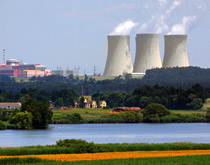
The key, says Hug-Glanzmann, is to strategize several steps ahead, much like a chess match. To do so, she optimizes the usage of storage devices over a time horizon in the future. It would be filled by wind and solar sources when they are prevalent and also work in tandem with constant low-level gas generation. That way, she explains, preparations could be made for when the sun sets or the wind becomes calm. Her stored energy could seamlessly compensate for the anticipated change in the weather, which would mean a minimum reliance on fossil fuels and a lessening impact on the environment.
That’s just one of the concepts Hug-Glanzmann is working on at EESG. She is also studying how the transmission grid can be used more optimally. With generation and loads becoming more variable, the grid needs to be able to adjust to these varying conditions, providing transmission capacity where needed. Integrating power flow control devices into the system, which allows ‘rerouting’ power flows, can provide the means to achieve this objective. A major question that she addresses is how such devices can be coordinated.
Hug-Glanzmann and her colleagues at EESG are actively pursuing collaboration for their projects with technology developers as well as technology users in order to revolutionize the world’s electric energy systems.
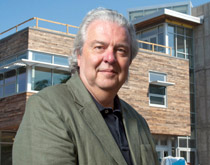
Stephen Lee (A’75, ’77) says he “always knew he wanted to be an architect.” What he didn’t know was what Volker Hartkopf, Carnegie Mellon professor of architecture, taught him. Lee began working with Hartkopf as a CMU undergraduate in the 1970s, and he says it changed the course of his life. “It coincided exactly with the first oil crisis hitting the planet,” Lee recalls. “Gasoline was rationed, and there were lines of people at the gas pump.” However, the high prices that shocked the American public were a way of life in Hartkopf’s native Germany, and his design philosophy embraced conservation. “Volker made me realize that architects were uniquely qualified to make major contributions to energy conservation in the built environment,” Lee says.
He traveled and learned with his mentor, incorporating the natural environment into his work. He contributed to projects like “Ice City” in Fargo, N.D., a series of ice tunnels to connect campus buildings and protect walkers from the elements. He took that sense of limitless possibility to heart with energy efficiency in his own architectural firm and as a CMU professor and advisor for the Carnegie Mellon Solar Decathlon teams, preaching a key architectural rule of thumb. Renewable energy technologies, such as PV panels and solar thermal systems, are expensive. In fact, installing $1 of “not very sexy” insulation results in the same energy savings as $10 spent on renewable technology. “Here at CMU,” says Lee, “our process is ‘until you’ve exhausted every last idea about reducing the energy load on the building, don’t even think about renewable energy.’”
And Lee points out that no architectural school in the United States maintains a larger concentration of faculty in the sustainability area. Current research projects include participation in the DOE’s Energy Efficient Buildings Hub in Philadelphia and the construction of software to guide building design choices that optimize energy performance. Another project aims to improve energy efficiency through software. “Control systems like heating and cooling tend to be islands that don’t communicate,” notes Lee. “In many buildings, because they weren’t programmed correctly, they are providing heating and cooling at the same time—something that should never happen.”
If architectural students at CMU expect to get good grades, Lee says they need to heed what Volker taught him: Effective design starts with a thorough understanding of the environment.
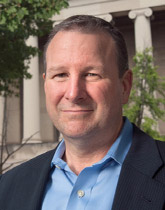
When he’s not sitting in his Warner Hall office as the VP of research, Rick McCullough is dedicated to facilitating campus collaboration—as well as the new companies spun off from resulting breakthroughs. And he works from experience. Years earlier, he created a remarkable plastic material that was not only soluble, but electrically conductive. He also developed an inexpensive manufacturing method. This conductive plastic can be dissolved into “inks” and printed onto other surfaces—enabling thinner, cheaper, more energy-efficient electronics. He spun off his innovation into a now-thriving company, Plextronics.
While the Pittsburgh-based company works toward commercializing applications of his technology, including energy-saving, wafer-thin organic LED displays, he and his collaborator at CMU, Tomasz Kowalewski and his lab team are now delving into the complicated science behind how these materials can be used to produce solar energy. In manipulating the molecules, they’re developing ways to increase efficiency, or the amount of energy generated from the sunlight. They’ve already created “transistor paint,” a material that can be spread on a surface and function. Their “big dream” is to extend this concept to “solar paint,” a material that you could coat on a roof, hook to a few electrodes, and use as inexpensive solar energy, putting a new coat on each year just as you would re-asphalt a driveway. And his goal is much larger than powering an air conditioner. “In developing countries, education is all related to how long they can keep light on,” McCullough explains. “Literacy is directly tied to the amount of available power. We’re a ways off, but that’s the hope.”
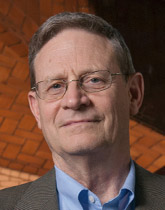
Among the group of leaders attending the March summit workshops is Granger Morgan. He and the others are doing more than exploring the ways in which Carnegie Mellon is working toward the transition to a sustainable energy future. The group is also working toward a concrete, immediate goal. They are forming a CMU interdisciplinary energy institute—which will take advantage of the university’s expertise in energy activities and “leverage its unique strengths moving forward.”
This institute will build on the groundbreaking work laid by two existing university organizations:
- The Steinbrenner Institute for Environmental Education and Research, established in 2004, which “seeks to change the ways the world thinks and acts about the environment.”
- The National Energy Technology Laboratory Regional University Alliance (NETL-RUA). This consortium of five universities and the laboratory of the U. S. Department of Energy is one of CMU’s largest energy research activities to date.
The center will also build on what Morgan calls “the enormous range of energy-related research that has gone on across the campus for the last couple of decades,” more than 20 centers or groups in all.
With this solid foundation beneath them, the new institute will be able to expand on these accomplishments by drawing on a number of key CMU strengths, identified by the leaders at the March 2011 summits.
- Combining fossil and renewable energy research: “In the political debate over energy, people frequently talk as though suddenly we’re going to turn off a switch and move to renewable energy,” says Timothy McNulty, associate VP of government relations who has worked on the development of NETL-RUA. “But it’s going to be blended. It’s less about rapid new discovery than it is how you’re going to integrate solar, wind, geothermal, and cleaner fossil.”
- A holistic, systems approach: “One of the things CMU is good at is running the numbers and seeing what makes sense, getting past the hype,” explains Morgan. “If we grow more corn in the Midwest to make fuel, what does all that extra fertilizer do when it reaches the Gulf of Mexico and enters the dead zone? We draw the boundaries wide enough so you don’t get into a mess because you don’t understand the problem’s full impact.”
- Policy analysis: “In the energy area, Carnegie Mellon is one of the world’s leading centers that combine technology and policy-focused research,” notes Morgan. “It’s very important to get inside the black box, to understand the detailed technical issues so you don’t just hold abstract policy discussions. You need to develop strategies that give private-sector players the right incentives to advance the overall needs of secure, reliable, and low-environmental-impact energy sources.”
- Technology innovation: One example is Aquion Energy, founded by Jay Whitacre, assistant professor of Engineering and Public Policy. The company, a developer of nontoxic batteries, recently raised $30 million in venture capital.
- Economic growth: CMU is greenlighting pioneering research into next-generation energy companies, creating jobs and strengthening the economy.
- Cybersecurity: Protecting our grid and energy infrastructure remains a critical task that Carnegie Mellon is well-positioned to address.
Morgan is named director of the new institute and Andrew Gellman, chemical engineering head and NETL-RUA lead organizer, its associate director.
One leader who attends the Silicon Valley workshop and sits on the advisory committee is alumnus Sherman Scott (E’66). He is the founder and president of Delmar Systems, a leader in mooring services for the offshore oil and gas industry, both in the United States. and internationally. Scott is inspired by the summit discussions and by what Carnegie Mellon is striving to accomplish. He and his wife, Joyce (A’65, Trustee Emeritus) decide to contribute much more than expertise. Longtime supporters of their alma mater, they pledge a lead gift—toward both the energy institute and the world-class new building that will house it.
Plans move forward. The new institute—the Wilton E. Scott Institute for Energy Innovation—is named in honor of Sherman’s father. The new building, Sherman and Joyce Bowie Scott Hall, will also be home to two other cutting-edge disciplines—biomedical engineering and nano-technology, with alumnus John Bertucci and his wife, Claire, contributing $5 million to enable the latter. The modern glass structure will sit at the end of the campus Mall and stretch from historic Hamerschlag Hall to Roberts to Wean, physically and symbolically connecting four campus buildings.
September 22, 2012 marks the official launch. Hug-Glanzmann, Lee, McCullough, and Morgan all heartily agree that the time has come.
Melissa Silmore (TPR’85) is a Pittsburgh-based freelance writer and a regular contributor to this magazine.
Related Links:
Breaking Ground for Innovation
Carnegie Mellon launches Wilton E. Scott Institute for Energy Innovation
Wilton E. Scott Institute for Energy Innovation
Environment at CMU
Energy Launch Weekend - Flickr



